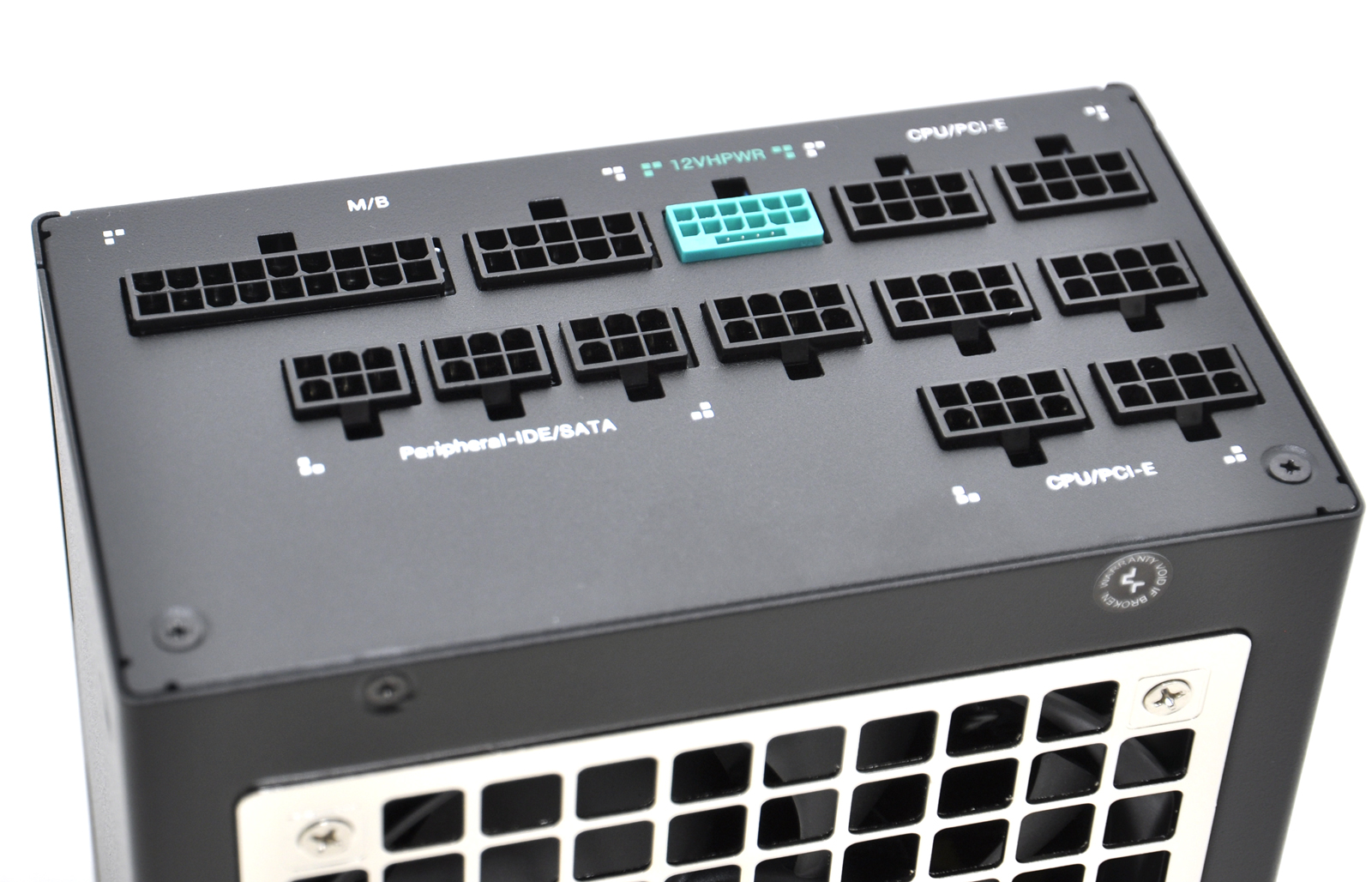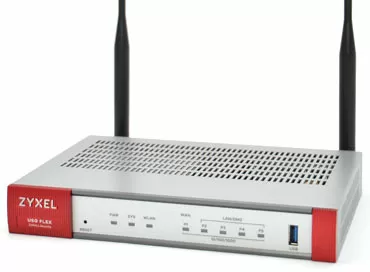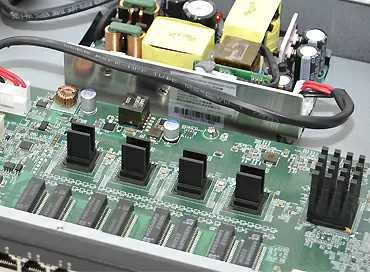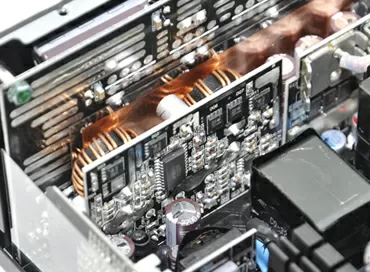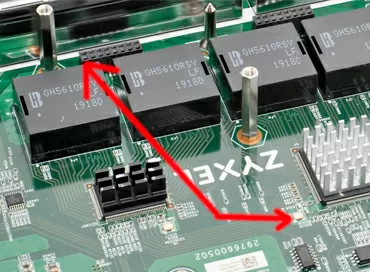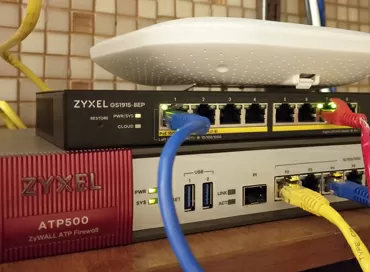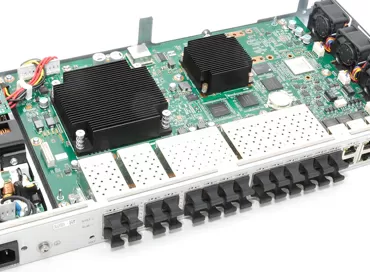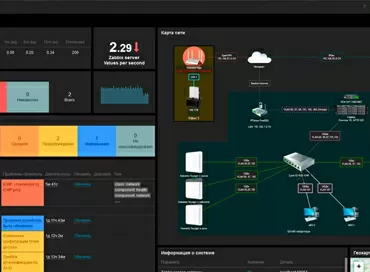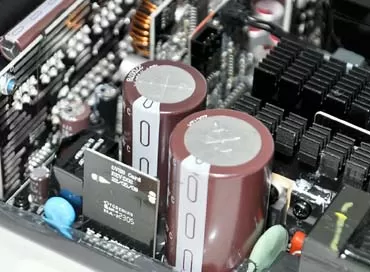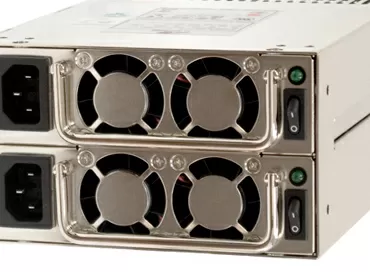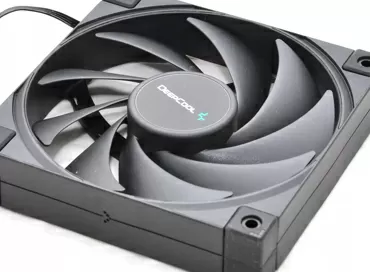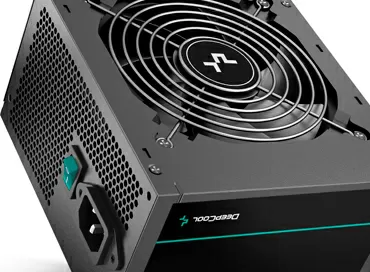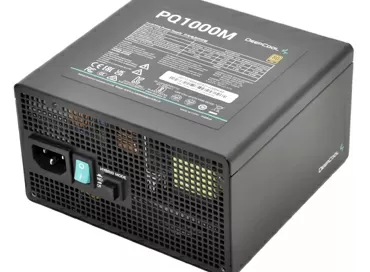Discovering the features of the Deepcool PX1000P power supply unit with an 80Plus Platinum certificate
The 80 Plus Platinum standard is gradually entering the top segment of home computers and workstations. Hand on heart, we can immediately say that there is nothing particularly new in it – both "platinum" and "titanium" have been used in server equipment almost since the appearance of the 80 Plus certificates themselves, and as a rule, such power supplies have been nursed for 10+ years without problems, even in very problematic conditions when there is dust all around, fans break down, and the ambient temperature varies from +5 to +40 degrees Celsius. Yes, they did not save on components in expensive server equipment, and the universal desire for "green" eco-friendly equipment forced them to fight for literally every extra Watt.
What did 80Plus Platinum forget in the computer segment?
From my point of view, computer power supplies of the 80Plus Gold standard have reached their perfection both in efficiency and reliability, and have practically run into a situation where there is simply nothing to improve in the design. Indirectly, this is confirmed by the crazy 10-year manufacturer's warranty, which only power supplies have in the world of computer components.
But still, the average power of a good PC or workstation is steadily growing, and a kilowatt power supply is already being taken for granted, which means it makes sense to talk about their effectiveness. The maximum efficiency of 80Plus Gold power supplies is achieved at 50% load and is 92%, platinum is only 2% more efficient – its efficiency rests at 94%. At 100% power, these values are 90 and 92%, respectively, and in absolute terms, we can calculate that at 100% load, a 1-kilowatt 80Plus Gold power supply unit will give 100 watts of heat to the surrounding air, and its congener with an 80Plus Platinum certificate is 80 watts, the difference will be about 20 watts.
As you can see, the difference is only about 20 watts, but is it a lot or a little? For energy bills, this is a mere trifle, which you can not even think about, unless you load your PC with complex tasks all day long. In fact, you will hear the difference in the fan noise: a delta of 20 degrees will be expressed in about 300-500 RPM on the axis, and the noise level will remain within the still comfortable 37-39 dB, add only 20 watts of heat – and the BP fan will make you run away from the room. Actually, for this reason, you should choose powerful 80Plus Platinum power supplies, not Gold.
You probably already know about ATX 3.0 – this standard for powering powerful graphics cards is now implemented in all new power supplies with a power above 500 watts, and DeepCool PX1000P is no exception.
Consumer Features of DeepCool PX1000P
If you don't bother too much with the design of the device, then the average consumer should pay attention to this: both the 1000 and 1300 W versions of DeepCool are implemented in a standard-sized 160 mm deep case, that is, power supplies can be installed in any ATX case. All cables are removable, most of which have a cross section of 16AWG.
Cooling is implemented according to the so-called "hybrid" scheme, when the fan does not operate at capacities below 50% of the nominal value, that is, in ordinary office tasks, the DeepCool PX1000P is completely silent and does not suck dust into itself.
To install the PSU as a second one, for example, in a mining rig or an AI farm, a plug on the ATX24 connector is supplied, which forcibly turns on the power supply. There was a time when DeepCool equipped its PSUs with a purse to store unused cables, but like all good things, it didn't last forever :(
DeepCool PX1000P Design
DeepCool PX1000P is based on the CTT platform from Channel Well, which is the most advanced to date. On the side of the high-voltage input, an EMI cascade filter is installed in the power supply unit, a varistor that implements protection against overvoltage, and a fuse to protect against overcurrent. Power Factor Compensation (PFC) is active.
Tires +3.3V and +5V take power from the +12V bus via a DC-DC converter mounted on a separate board. The synchronous rectifier is similarly mounted on a separate board and installed vertically for better airflow.
By the way, pay attention to the fan from HongHua company. Yes, we are already used to the fact that fans from this manufacturer are installed in expensive power supplies, and if at first this caused rejection, then years later we must admit that there are no complaints about these components. The HA1225H12SF-Z model is used here, which is closed from the inside with a plug with slots that concentrate the air flow on the hottest elements. Please note that two quarters of the fan are almost completely closed, and one is almost completely open. That's the kind of tricks designers go to to improve the airflow. The fan uses a hydrodynamic rotor suspension – the most reliable option available.
Unfortunately, everything is standard for cables: during the existence of the ATX 2.4 standard, manufacturers of top-end power supplies have found a "golden mean" of conductor cross-sections and the number of connectors and blindly follow the foundations. All cables in DeepCool PX1200G are unpluggable, to facilitate installation, yet they are black, faceless. There are no improvements like ferrite rings or capacitors here.
|
Cables and connectors | |
|
ATX 20+4 (600 mm) |
1 piece, cross section 16AWG (1.31 sq.mm) |
|
4+4 Pin EPS12V (700 mm) |
2 cables with a cross section of 16AWG (1.31 sq.mm), a total of 2 connectors |
|
6+2 Pin PCIe (650 mm) |
5 cables with a cross section of 16 AWG (1.31 sq.mm), a total of 5 connectors |
|
12 + 4 Pin PCIe5 (650 mm), 600 W |
1 piece with a cross section of 16 AWG (1.31 sq.mm) for power conductors and 24 AWG (0.205 sq.mm) for signal |
|
SATA (500 + 150 + 150 + 150 mm) |
2 cables with a cross section of 18 AWG (0.823 sq.mm), a total of 8 connectors |
|
4 Pin Molex (500 + 150 + 150 +150 mm) |
1 cable with a cross section of 18 AWG (0.823 sq.mm), a total of 4 connectors |
From the cable configuration, it is not clear to me why there are so few connectors for connecting HDD - without adapters and disk baskets, no more than 8 SATA / SAS drives can be installed, that is, for a workstation with a large number of drives, you will have to come up with something, but often such powerful power supplies are selected based on the highest efficiency in the range 500-600 Watts for computers with a couple dozen HDDs.
Testing
When testing, the first thing we do is check the tire voltage output beyond the nominal value at various loads.
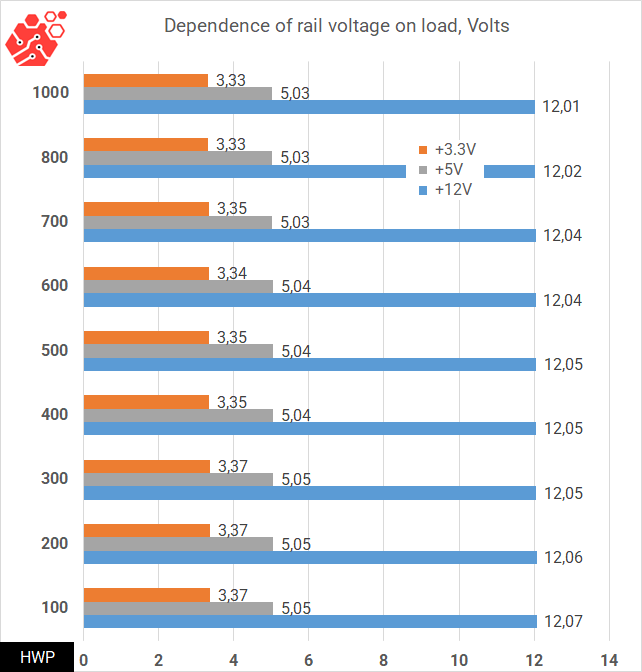
Looking at the tire voltage readings, only one word comes to mind - "perfect"!
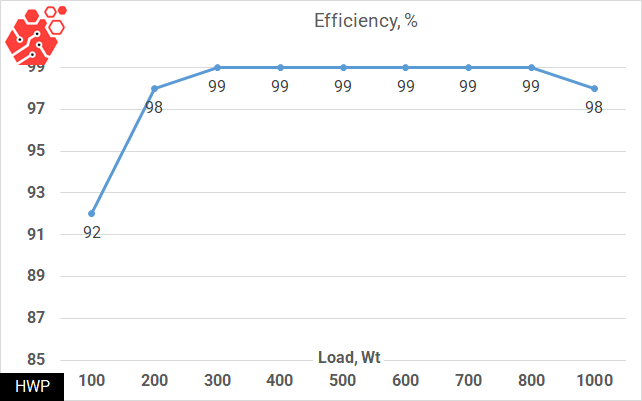
The efficiency index exceeds the requirements of the 80Plus Platinum standard and is very close to the coveted "unit".
Conclusions
I think that from the point of view of design thought, the power supplies have reached their perfection, and there will be nothing to strive for in the future. Judge for yourself - the efficiency of the test power supply is close to 100%, and even changing the class of measuring devices will not show any noticeable difference that would matter to the user. Unless, I wouldn't be surprised at all if fanless models appear among kilowatt PSUs soon, but we can definitely say that the era of bulky and noisy PSUs with a power of less than 1200 watts has sunk into oblivion.
All the same is true for voltage bus deflection rates: today we are talking about hundredths of a Volt, which are not fixed by every device, and do not affect connected electronics at all, which still use their own voltage stabilizers and converters.
But at the same time, admiring the engineering idea and build quality, I can't help but ask once again why manufacturers so persistently ignore computers with a lot of HDD and SATA SSD? The need for big data does not disappear anywhere, and every now and then I come across the question of choosing a PSU model with a large number of "tails" for connecting drives on forums. Unfortunately, DeepCool could have played better here.
Of course, DeepCool PX1000P, as befits a top-end novelty, uses high-quality components, and it has become familiar to us that the PSU is given an incredible 10-year warranty by computer standards, so this power supply can be taken both for today's needs and "for growth".
Michael Degtjarev (aka LIKE OFF)
29/01.2024




